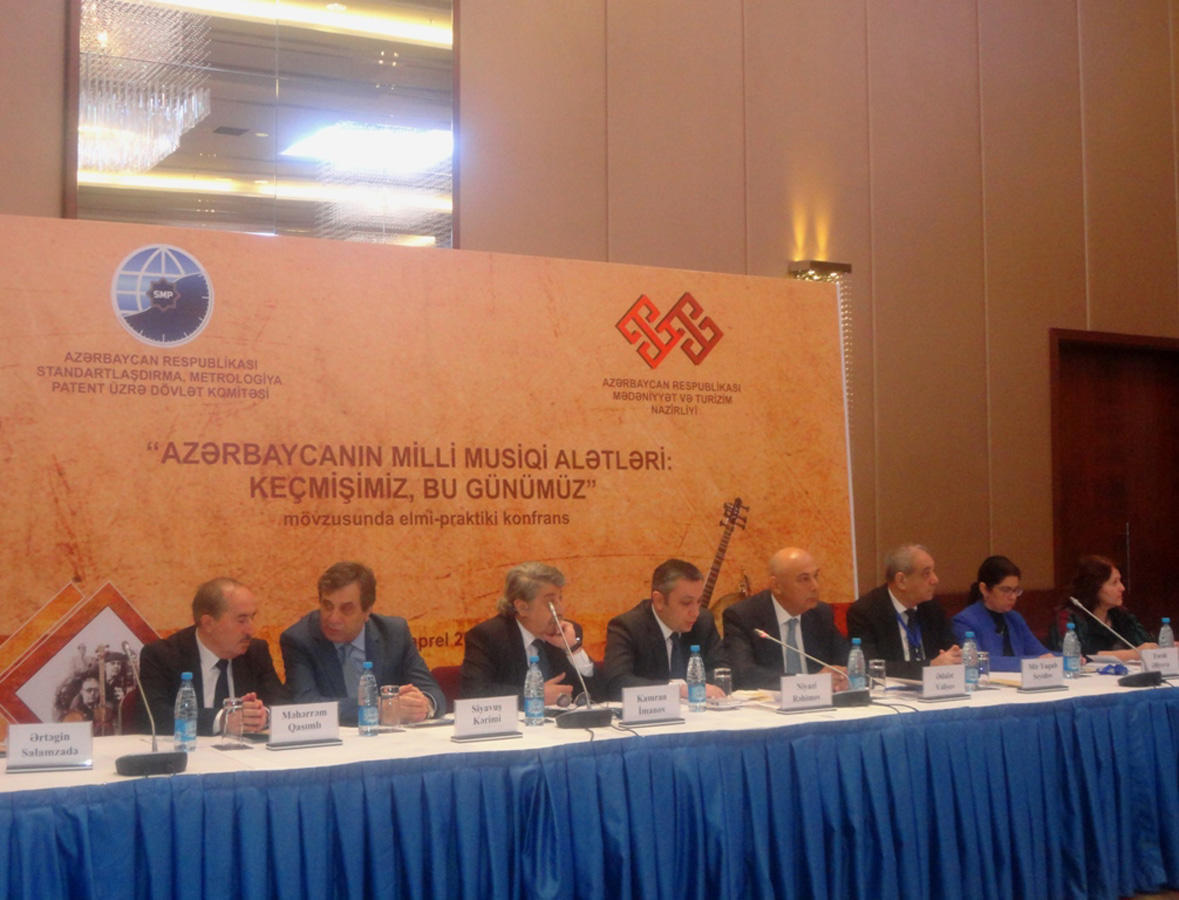Official: Armenians' attacks on Azerbaijani culture continues

By Rashid Shirinov
Armenians' attacks on the Azerbaijani music and culture continue today, said Niyazi Rahimov, the Vice-Chairman of Azerbaijan's State Committee for Standardization, Metrology and Patents.
He made the remark while addressing a conference titled “National musical instruments of Azerbaijan: Our past - Our present” in Baku on April 5.
“Armenians, who have always differed for vandalism towards Azerbaijani music, cuisine, history and cultural values of Azerbaijani people, have also periodically made attempts to ‘grab’ Azerbaijani musical instruments,” said Rahimov. “They tried to misappropriate, nationalize and transform them into Armenian musical instruments. This process continues today.”
He added that Azerbaijan’s Culture and Tourism Ministry together with other relevant government agencies have taken necessary steps for the study, preservation and development of the Azerbaijani culture and will continue this work in future.
Chairman of Azerbaijan’s Copyright Agency Kamran Imanov, who also participated in the event, noted the importance of preventing the misappropriation of Azerbaijan’s cultural and spiritual values by Armenians.
He noted that Azerbaijan conducts active work in this direction, appropriate steps have been taken, and literature based on historical facts is published.
“The purpose of misappropriation of Azerbaijan’s tangible and intangible heritage is to show that Hayas [Armenians] are allegedly ‘the most ancient indigenous’ people of the Caucasus, to demonstrate the ‘great Haya culture’, to collect fake materials for the realization of dreams of ‘Greater Armenia’ and to mislead the international community,” Imanov said, adding that the roots of the Armenian plagiarism are closely connected with the illegal territorial claims of Armenians.
Imanov also noted that such Azerbaijani and Eastern musical instruments like tar, kamancha, balaban, zurna, ud, which Armenians want to misappropriate, existed long before the Armenians settled in the South Caucasus.
The conflict between the two South Caucasus countries began in 1988 when Armenia made territorial claims against Azerbaijan. As a result of the ensuing war, in 1992 Armenian armed forces occupied 20 percent of Azerbaijan, including the Nagorno-Karabakh region and seven surrounding districts. More than 20,000 Azerbaijanis were killed and over 1 million were displaced as a result of the large-scale hostilities. The 1994 ceasefire agreement was followed by peace negotiations.
Armenia still controls fifth part of Azerbaijan's territory and rejects implementing four UN Security Council resolutions on withdrawal of its armed forces from the Nagorno-Karabakh and surrounding districts.
Overall, since the beginning of the Nagorno-Karabakh conflict and occupation of Azerbaijani territories, Armenian aggressors destroyed 1,200 historical and architectural monuments, looted 27 museums, over 100,000 items were exported to Armenia. In addition, the Armenian occupiers destroyed 152 religious monuments and 62 mosques, 4.6 million books in 927 libraries, including the Holy Quran and rare Islamic manuscripts.
---
Rashid Shirinov is AzerNews’ staff journalist, follow him on Twitter: @RashidShirinov
Follow us on Twitter @AzerNewsAz
Here we are to serve you with news right now. It does not cost much, but worth your attention.
Choose to support open, independent, quality journalism and subscribe on a monthly basis.
By subscribing to our online newspaper, you can have full digital access to all news, analysis, and much more.
You can also follow AzerNEWS on Twitter @AzerNewsAz or Facebook @AzerNewsNewspaper
Thank you!










